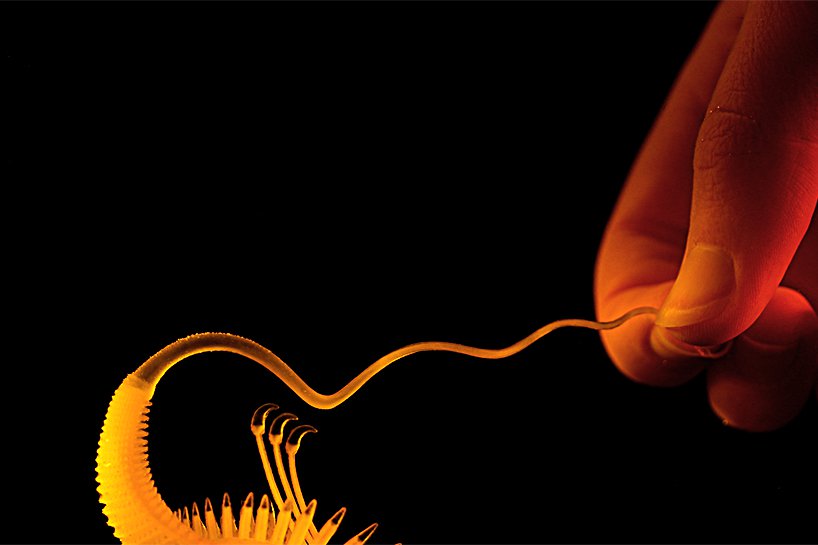Nicole Hone, an industrial design Master’s student at the Victoria University of Wellington, New Zealand, has designed several 4D printed interactive plants.
The plants react to physical stimulus either contracting or blossoming depending on the situtation. In addition to the 3D printing process used to make the plants, time is thefourth dimension here. The artist calls them “3D printed aquatic plants of the future” or Hydrophytes.
Hone explained her creation, “I have always been fascinated with nature, it inspires my design ideas and aesthetic. For this project, I became particularly interested in botany and marine life. I was amazed by the way sea creatures and corals moved, and I wanted to reflect similar qualities in my designs.”
The project was part of Hone’s Master’s thesis titled, Designing Organic Performance with Multi-material 3D/4D Printing. It was supported by NZProduct Accelerator, a program promoting additive manufacturing in New Zealand.
Interactive 4D plants
The Hydrophytes were designed using Rhinoceros 3D (CAD software) and Grasshopper 3D, a visual programming language, and also used 3D sculpting tool, ZBrush. The plants were then 3D printed using an elastopolymer – a combination of rubber and plastic, also known as digital materials, and Stratasys’ Polyjet system.
The material is significant for making the plants interactive. Hone explains, “their man-made composite materials behave uncannily similar to living organisms […] with multi-material 3D printing, you can print with a range of rigid and flexible materials blended together in the same object […] you can pump air into them and they’ll sort of come to life in front of camera”
The designer believes that 4D printed objects with interactive qualities will be used as movie props, and this will enhance the movie-making process and experience.

4D printing in biomedicine
Last year a team of researchers at the Engineering Design and Computing Laboratory of ETH Zurich, 4D printed tetrahedrons. Once the heat is applied to the flat tetrahedrons slowly transforms itself into a standing structure.
The medical industry is also exploring the capabilities and usefulness of 4D printing technology. George Washington University researchers developed a 4D bioprinting technique for nerve regeneration. In another research paper, a combined team of scientists from the University of Bristol and University of Bath developed a 3D printed ink expands when dipped in water.
For more news related to 4D printing and other interesting developments in the industry, subscribe to our 3D printing newsletter. Also join us on Facebook and Twitter.
Visit our 3D printing job site for a career in the industry.
Featured image shows the arrow pod Hydrophyte. Image courtesy of Nicole Hone

